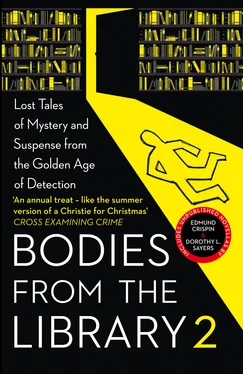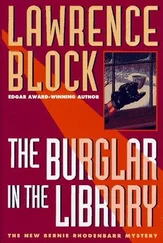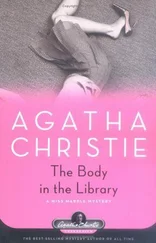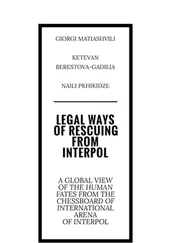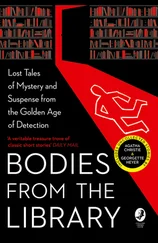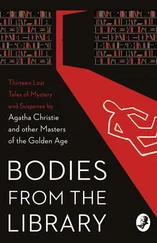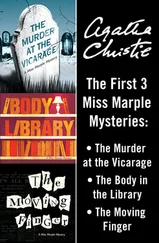And so now, here he was, trying to get through to them, to the circle sitting there in the darkness with their touching hands. Screaming, silently screaming. ‘Listen to me, listen! Tell them, warn them, implore them to believe in me! They’ve got it all wrong. Yes, I cheated sometimes, but I had the Gift, I had it, and here I am now to prove it to you, speaking to you … Tell them I wasn’t the killer, tell them it’s all going to begin again!’
But they would not hear him. Heard only the sweet, familiar piping. ‘Very happy. Yes, he’s happy now, he’s met them all on the Other Side, his sins are forgiven him. All peace and joy on the Other Side, sunshine and flowers everywhere, just sunshine and flowers …’
Sunshine and flowers; and no one to believe in his warning—this very night, it’s all going to begin again.
CHRISTIANNA BRAND CONTENTS Cover Title Page BODIES FROM THE LIBRARY 2 Forgotten stories of mystery and suspense by the Queens of Crime and other Masters of the Golden Age Selected and introduced by Copyright Introduction NO FACE Christianna Brand BEFORE AND AFTER Peter Antony HOTEL EVIDENCE Helen Simpson EXIT BEFORE MIDNIGHT Q Patrick ROOM TO LET Margery Allingham A JOKE’S A JOKE Jonathan Latimer THE MAN WHO KNEW Agatha Christie THE ALMOST PERFECT MURDER CASE S. S. Van Dine THE HOURS OF DARKNESS Edmund Crispin CHANCE IS A GREAT THING E. C. R. Lorac THE MENTAL BROADCAST Clayton Rawson WHITE CAP Ethel Lina White SIXPENNYWORTH John Rhode THE ADVENTURE OF THE DORSET SQUIRE C. A. Alington THE LOCKED ROOM Dorothy L. Sayers Acknowledgements Also available About the Publisher
Mary Lewis, née Milne, was born in Malaya in 1907, the daughter of a tea planter. She wrote under the pen names Mary Brand, Mary Roland, Mary Ann Ashe, China Thompson, Annabel Jones and, the one as which she is best known, Christianna Brand, which joined her mother’s first name to her grandmother’s maiden name.
After several happy years at school at a convent in Berkshire, Brand was told she would have to leave by her father, who had been declared bankrupt. At the age of seventeen, she found herself ‘literally penniless’ and with no training whatsoever for earning her own livelihood. She moved to London where, known by her friends as ‘Quif’, she drifted from one job to another, eventually becoming a dance hostess (which, incidentally, was not a euphemism for something less respectable). This inspired her earliest published short story, a light romance entitled ‘Dance Hostess’ (1939) and it led to her meeting her husband, a surgeon called Roland Lewis. The couple married in 1936 and, when the Second World War broke out, Roland Lewis joined the Royal Army Medical Corps and was posted overseas.
On her own in London, Mary Lewis moved in and out of a variety of jobs, eventually taking on a role that was to change her life—she became a shop assistant. While she was not a great success in the job, the job led to a great success for her because she detested the manager of the shop so much that she decided to kill her … in a novel. The hate-fuelled result, Death in High Heels (1941), is set not in a shop but in a high-class Mayfair couturier, drawing on another of her many early jobs. There is a poisoning and the detective is the brash young Inspector Charlesworth.
With the return of her husband to England, Mary Lewis settled down with the intention of writing for the rest of her life. Her second novel, Heads You Lose (1941), won the $1,000 Red Badge prize offered by publishers Dodd, Mead for the best mystery of the year, but it was her third book, Green for Danger (1944), that made her a household name, not least because of the film version, which was released in 1946 and starred Alastair Sim as her best known detective, Inspector Cockrill. That same year, she was elected to the Detection Club, and she continued to write books of various kinds under various names.
By the late 1950s, Mary Lewis was recognised as a leading name in the crime and detective genre. Sadly, and for private reasons, she decided to give up writing mystery novels. However, she could not abandon writing altogether and, as well as a few newspaper serials and some short stories for Ellery Queen’s Mystery Magazine , she wrote a series of ‘true life’ novellas for Woman and several short books for children featuring Nurse Matilda, a character based on her own nanny.
And then, twenty years since his last case, Inspector Charlesworth returned, in The Rose in Darkness (1979), a strange, almost dreamlike book in which a reclusive actress and her small group of friends are caught up in what appears to be murder. The return was very warmly welcomed by critics and readers alike but Mary Lewis had been suffering from a painful illness for some years and she died in March 1988.
At the time of her death, Mary Lewis was working on a new detective story featuring Inspector Cockrill and, while that was not finished, a collection of largely unpublished material is due in 2020 from an American publisher, Crippen and Landru.
‘NO FACE’ has not been published previously.
BEFORE AND AFTER CONTENTS Cover Title Page BODIES FROM THE LIBRARY 2 Forgotten stories of mystery and suspense by the Queens of Crime and other Masters of the Golden Age Selected and introduced by Copyright Introduction NO FACE Christianna Brand BEFORE AND AFTER Peter Antony HOTEL EVIDENCE Helen Simpson EXIT BEFORE MIDNIGHT Q Patrick ROOM TO LET Margery Allingham A JOKE’S A JOKE Jonathan Latimer THE MAN WHO KNEW Agatha Christie THE ALMOST PERFECT MURDER CASE S. S. Van Dine THE HOURS OF DARKNESS Edmund Crispin CHANCE IS A GREAT THING E. C. R. Lorac THE MENTAL BROADCAST Clayton Rawson WHITE CAP Ethel Lina White SIXPENNYWORTH John Rhode THE ADVENTURE OF THE DORSET SQUIRE C. A. Alington THE LOCKED ROOM Dorothy L. Sayers Acknowledgements Also available About the Publisher
Peter Antony CONTENTS Cover Title Page BODIES FROM THE LIBRARY 2 Forgotten stories of mystery and suspense by the Queens of Crime and other Masters of the Golden Age Selected and introduced by Copyright Introduction NO FACE Christianna Brand BEFORE AND AFTER Peter Antony HOTEL EVIDENCE Helen Simpson EXIT BEFORE MIDNIGHT Q Patrick ROOM TO LET Margery Allingham A JOKE’S A JOKE Jonathan Latimer THE MAN WHO KNEW Agatha Christie THE ALMOST PERFECT MURDER CASE S. S. Van Dine THE HOURS OF DARKNESS Edmund Crispin CHANCE IS A GREAT THING E. C. R. Lorac THE MENTAL BROADCAST Clayton Rawson WHITE CAP Ethel Lina White SIXPENNYWORTH John Rhode THE ADVENTURE OF THE DORSET SQUIRE C. A. Alington THE LOCKED ROOM Dorothy L. Sayers Acknowledgements Also available About the Publisher
It was nine o’clock on a warm summer’s morning when Nurse Stephens discovered the body of her employer. Even in death Mrs Carmichael’s face still held the irritability of one forced to lean on others who were all too often engaged elsewhere. For fifteen years she had been paralysed from the waist down. Now a tiny hole, drilled neatly through her right temple, had made the top half of her body as immobile as the lower half.
It was all most unfortunate, particularly for Nurse Stephens, who had a most unprofessional attitude to the sight of the little blood there was. She managed, however, to ’phone the doctor and the police.
Inspector Swallow was nominally in charge of the party who arrived at Delver Park at ten o’clock—assorted ‘experts’, finger-print men, a photographer and the doctor. After a telephone conversation with Inspector Rambler of Scotland Yard, Swallow had been advised by that gentleman to bring with him on the case Mr Verity, who happened to be staying in the locality, and whenever Mr Verity ventured on a case, no one could possibly deny that he, not the police officer, was in charge of it.
Читать дальше
